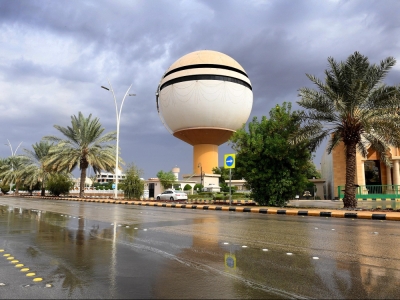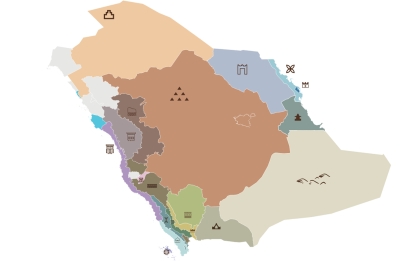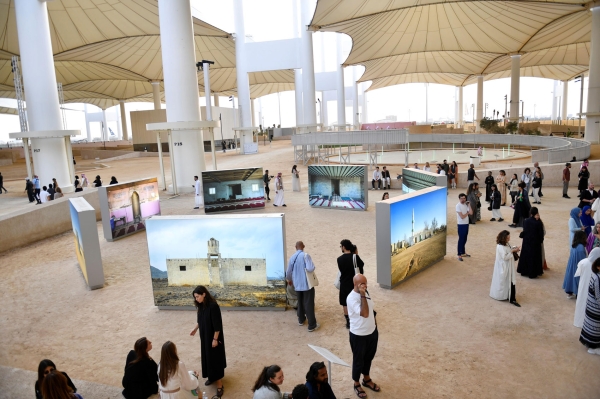
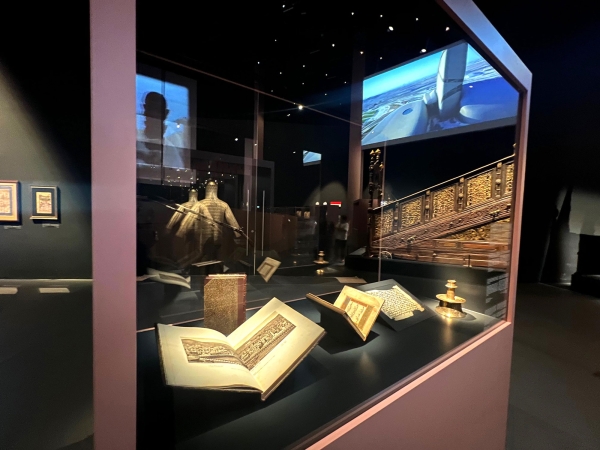
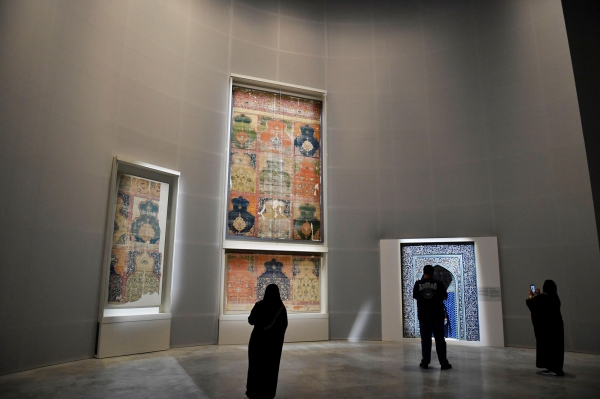
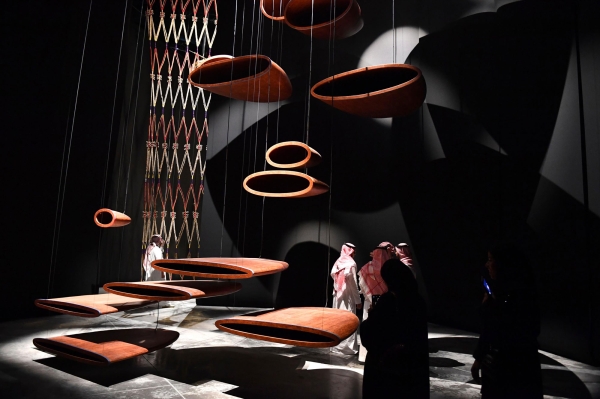
The Islamic Arts Biennale is an event organized by the Diriyah Biennale Foundation, under the supervision of the Ministry of Culture, and in collaboration with the Ministry of Transport and Logistics Services and the General Authority of Civil Aviation. It aims to celebrate Islamic culture and arts and enhance cultural and artistic exchange between the Kingdom of Saudi Arabia and the world. Held in Jeddah, the event commenced on January 23, 2023, and lasted for three months, under the theme "Awwal Bait".
Islamic Arts Biennale sections
The events of the Islamic Arts Biennale were held in an area of 118,000 m² inside the Western Hajj Terminal at King Abdulaziz International Airport in Jeddah. It featured two main exhibition spaces for displaying artworks and artifacts. The first space consisted of interconnected exhibitions aligned in a single line, while the second space comprised two pavilions dedicated to Makkah al-Mukarramah and al-Madinah al-Munawwarah. Additionally, there was an outdoor area under the Hajj Terminal's canopies, designated for displaying paintings and installation artworks.
The buildings of the Islamic Arts Biennale consisted of a series of structures with varying sizes and proportions, organized around a central courtyard. This arrangement provided artists with diverse spaces that inspire them and allow them to reimagine and reinterpret their works. The biennale includes four exhibition halls, a theater, a mosque, art workshops, seminar rooms, the Madar exhibition, and several shops, cafes, and restaurants.
Importance of the Islamic Arts Biennale
The Islamic Arts Biennale showcases the meanings that have shaped and refined Islamic identity since its inception, through symbols of movement, sound, and destinations. These symbols have developed over the centuries from the passage of pilgrims through the Hejaz region to perform the rituals, accompanied by the practice of crafts and arts, the exchange of customs and traditions, and the sharing of sciences and knowledge, making the region a global cultural and intellectual crossroads.
The biennale enriches the Hajj Terminal by celebrating Islamic culture and arts, making it a pillar of the local art scene in Jeddah and the Kingdom throughout the year. It aims to build bridges between artisans, industrialists, and academia to open new horizons.
Islamic Arts Biennale topics
The first edition of the biennale focused on two main themes: the Qibla and the Hijra.
The journey of the Islamic Arts Biennale began with the Qibla, featuring a series of consecutive exhibition halls. It started with the call to prayer, Adhan, resonating, symbolizing its occurrence worldwide with the sun's movement, inviting contemplation of the meanings of worship. This was set amidst a collection of historical artifacts and contemporary artworks, leading to reflections on the final moments of human life, and culminating in the display of two ancient pieces obtained from inside al-Kaaba.
Visitors of the biennale then moved to two pavilions containing rare artifacts about the migration of Prophet Muhammad, peace be upon him (PBUH), and his esteemed companions (may Allah be pleased with them) from Makkah al-Mukarramah to al-Madinah al-Munawwarah. These pavilions featured artworks that highlighted the essence of the Hijra and facilitated knowledge exchange and cultural blending formed during the Hajj seasons.
Islamic Arts Biennale contents
The biennale showcased fifteen works presented for the first time, along with 280 selected art and historical pieces from institutions within and outside the Kingdom, creations made by forty artists from all over the world, combining contemporary art with artifacts and treasures from previous Islamic eras.
The biennale displayed collections of artifacts from the Grand Mosque and the Prophet's Mosque, including the door and key of al-Kaaba al-Musharrafa, ancient Quran manuscripts dating very close to the time of the Prophet, a model manuscript of the Holy Quran made of pure gold, and the interior column of al-Kaaba al-Musharrafa from the time of the Companion Abdullah Bin al-Zubair (may Allah be pleased with him). In addition to works in wood and metal, artifacts, antiques, and historical models obtained from world-renowned museums such as the "Benaki" Museum in Athens, the "History of Science" Museum in Oxford, the "Louvre" in Paris, and the "Victoria and Albert" Museum in London.
Participants in the Islamic Arts Biennale
Participants in the biennale included the General Presidency for the Affairs of the Grand Mosque and the Prophet's Mosque (currently the General Authority for the Affairs of the Grand Mosque and the Prophet's Mosque), the King Fahd National Library, and various cultural institutions and bodies, both governmental and private. International participants came from Uzbekistan, Tunisia, Greece, and Azerbaijan, along with a group of centers and institutes specializing in research, study, and preservation of Islamic arts. Additionally, artists and artisans specialized in this field, and sixty judging committees were present.
Related quizzes
Related articles

